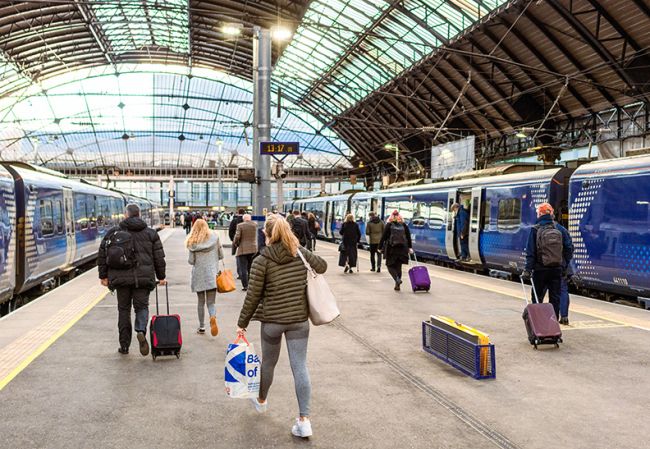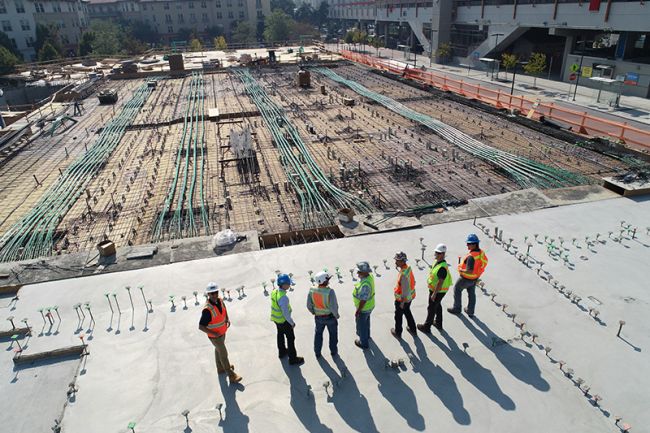Public and private sector: Aretha Franklin got it right
Aretha Franklin’s “Respect" could be an anthem for securing the best from private sector provision of infrastructure and transport services.

When the wonder that was Aretha Franklin sang "Respect", little did she know that it could be an anthem for how to secure the best from private sector provision of infrastructure and transport services.
Steer works with clients across the globe to support collaborative working between the public and private sectors. One issue we frequently spot is the need for both parties to better understand each other's roles as well as the needs and constraints that they face.
Why engage the private sector?
Views on the merits of private sector participation vary considerably among the public and politicians, but evidence from those economies that have embraced it suggests that the private sector is better able to innovate, more agile, and able to bring a broader set of experience to operational, commercial, and financial management than the public sector. But it also demonstrates that if you wish to harness the private sector’s entrepreneurial spirit, you must ensure that it is appropriately rewarded through the commercial relationship defined by the contract.
At the same time, it is important to recognise the public sector’s particular role given the advantages it enjoys; probably a lower cost of capital; ideally, a longer-term perspective covering multiple generations; the ability to influence policy across multiple parts of the economy and different aspects of our everyday lives; and, critically, greater accountability to the electorate and taxpayers.
What can experience teach us about how to improve this relationship?
During our work, we have come across many occasions when more understanding and respect from both sides are required. The UK’s infrastructure has seen some frustrations where perhaps increased respect and understanding may have been advantageous:
- The Government's 2018 market-led proposals, launched in March 2018, do not appear to have delivered for either the public or the private sector. In April 2019, DfT was engaged in conversations with backers of only 10 proposals out of the 30 submitted, and it is not yet clear what happened to the more promising ones. It begs several questions, was what the Government asked for unclear or misguided; was there a means to take ideas forward; and/or did the applicants not follow the required process or misuse it to flag inappropriate schemes?
- We are now in the final years of many of the UK's 580 or so Private Finance Initiative contracts, which enabled the building of schools, hospitals and prisons across the country. Many of these contracts have been heavily criticised, and it will be interesting to see if, in hindsight, the relationships on which they were based worked effectively to deliver the anticipated investment. Has the private partner delivered and managed assets of the right quality efficiently, and has the public sector managed the client-contractor relationship effectively to ensure a smooth handover of responsibilities in the final years of the contract?
- Arguably, the absence of any clear and coherent role for private finance since the demise of the PF2 model in 2018's budget has caused a significant policy hiatus. The UK is still in need of much better infrastructure, and avoiding financing options involving private sector capital may mean that they disappear altogether; such capital can always find other markets in which borrowers are less sceptical and offer greater certainty of reward.
Turning to the UK’s rail sector and its ambition for a more collaborative partnership between Government, the guiding mind of Great British Railways, and the private sector operators and wider supply chain:
- Reported anecdotal comments from rail operators on post-Covid arrangements in the rail sector, suggest a risk of undermining innovation and slowing decision making. But with more than £20bn of public money in support and a farebox of £6bn at risk, the Government needs some assurance and a degree of control over key areas of decision-making. Finding the right balance, one that recognises the needs and potential contributions of both parties, will be key to getting the best value from the National Rail Contracts.
- As work continues on the future design of passenger service contracts for railways in Great Britain, and as the Annual Business Plan process defined by the current national rail concessions plays out, both Government and the train operators will have the opportunity to demonstrate a better understanding of each other’s role and priorities and to build a more trusting relationship than has prevailed in the past.
- The design and incentives for the post-Williams rail sector, including its financial framework, will need to facilitate collaboration and respect both prudent management of public finances and the stimulation of innovation that may fail.
As future Governments seek to address our housing, health, social services, energy, mobility, data, and other infrastructure deficits, they will need to show respect for, and confidence in, the private sector if they are to avoid wasting time and energy on unproductive and frustrating processes that do not deliver for tax payers. Equally, the private sector must demonstrate a deeper understanding of what the public sector is seeking as well as of the constraints it faces.
As Aretha Franklin might have put it:
“I'm about to give you all of my money
And all I'm askin' in return, honey
Is to give me my propers when you get home.”
Respect must be offered in both directions. Whether it's innovation, skill, and flair from the private sector, or a fair reward for risk transferred from the public sector, both parties need their "propers" from any future relationship.


























